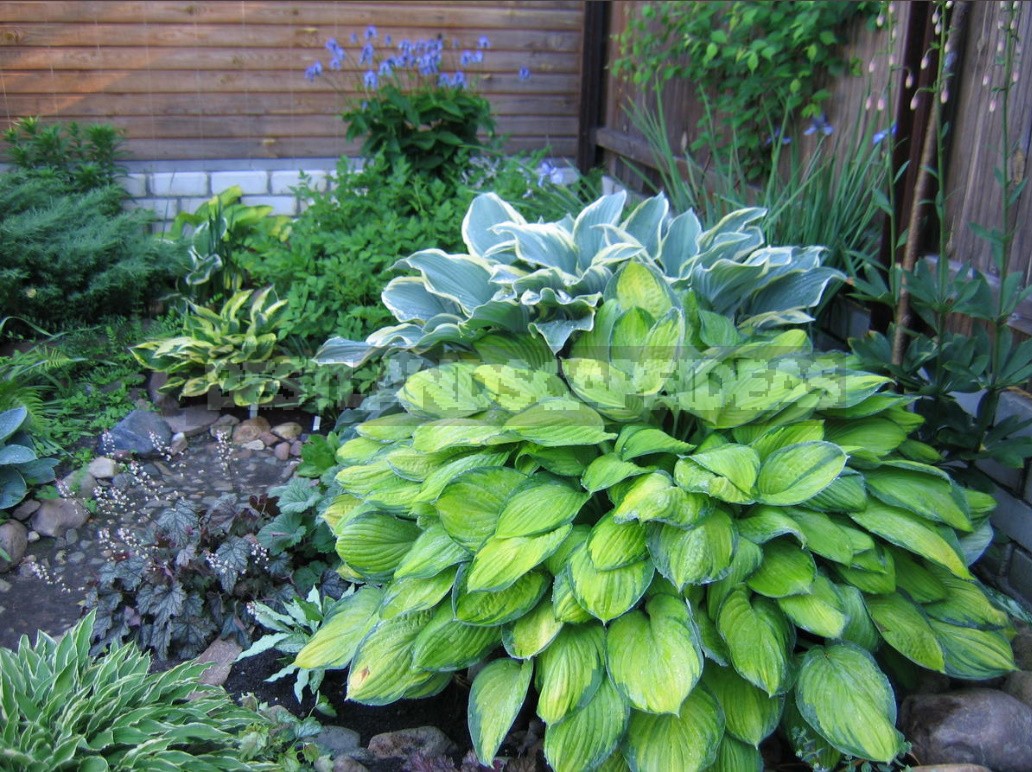
Hosta is considered an unpretentious crop, but its luxurious shrubs really adorn only those gardens where they are well cared for. How? Let’s talk about this.
Irrigation tricks
Constantly wet soil and inclement weather with frequent drizzling rain are very common conditions for Hosta natural habitats, so in a dry climate, you can not do without additional watering. Especially carefully it is necessary to pour not only young plants, but Mature and old bushes.
Inexperienced growers often make the mistake of watering Hosta superficially, on the foliage, while the soil under the Bush remains completely dry. Unfortunately, such watering does more harm than good. With surface watering, water rolls down the powerful broad foliage like an umbrella and does not get to the roots in the proper amount.
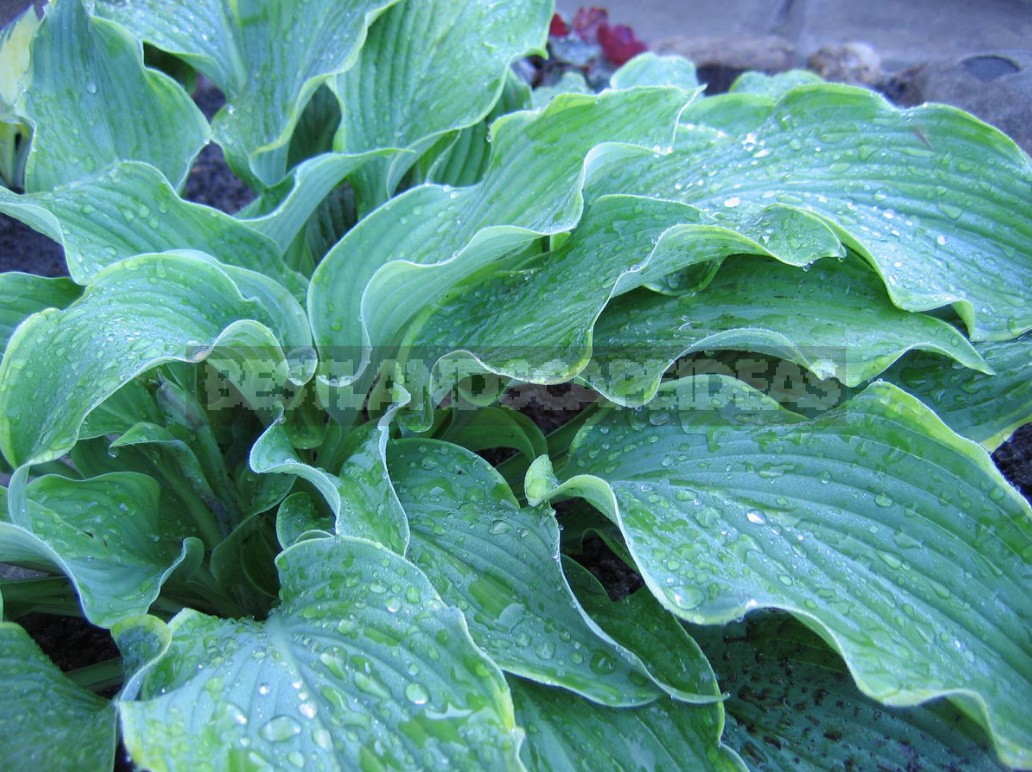
Worse, in hot dry weather, moisture stagnates in the rosettes of leaves, and this can cause foci for fungal diseases and rot, since plants do not receive nutrition from the root system located in dry soil, and for this reason Hosta is weakened. In addition, wet foliage in dry weather is especially attractive for slugs and snails-the main enemies of Hosta. And in blue and blue varieties from abundant artificial watering on dry leaves quickly disappears delicate wax coating.
And most importantly: Hosta with constant surface watering, the root system develops incorrectly: only those roots that are located in the upper layer of the soil actively grow; more important, life-supporting ones are located in deep layers — and they begin to lag behind in development. And as soon as an unfavorable dry period occurs, the surface root system suffers from dryness more than the deep one, and Hosta becomes vulnerable to diseases and unpleasant physiological phenomena: the foliage becomes dry in a very short time, quickly burns, and after watering the plant can no longer restore its decorative appearance.
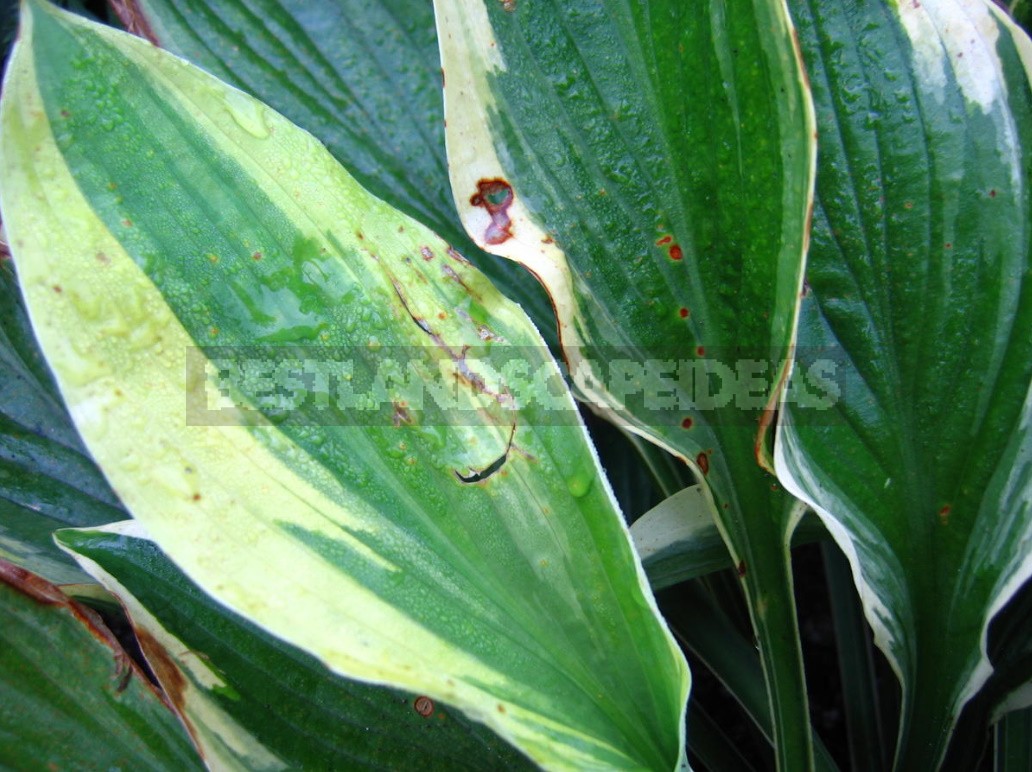
Hosta with a properly developed deep root system are more resistant to adverse periods, and their appearance is quickly restored after the first abundant watering. When properly watered, the soil should be saturated with moisture to a depth of at least 30-50 cm. On average, one Bush takes 10-30 liters of water (depending on the size of the Bush).
Ideally, Hosta should be watered in the morning-up to 11 hours. Evening watering attracts slugs and snails to Hosta. To avoid sun-water burns on the foliage, daytime watering is carried out only in cloudy weather.
What and how to feed Hosta
In order to grow luxurious highly ornamental Hosta bushes that will become a true garden decoration, you need not only abundant and proper watering, but also timely and regular feeding. Hosta is very responsive to fertilizing with both organic and mineral fertilizers, but they should not be abused — you need to apply fertilizers correctly and in a timely manner.
Hosta belong to adventitious root perennials and have a powerful but compact root system with fleshy cord-like roots that continuously grow at the base of the shoots in the upper layer of the soil, often even coming out on its surface, so the roots of the plant must be provided with moisture, nutrition and shading.
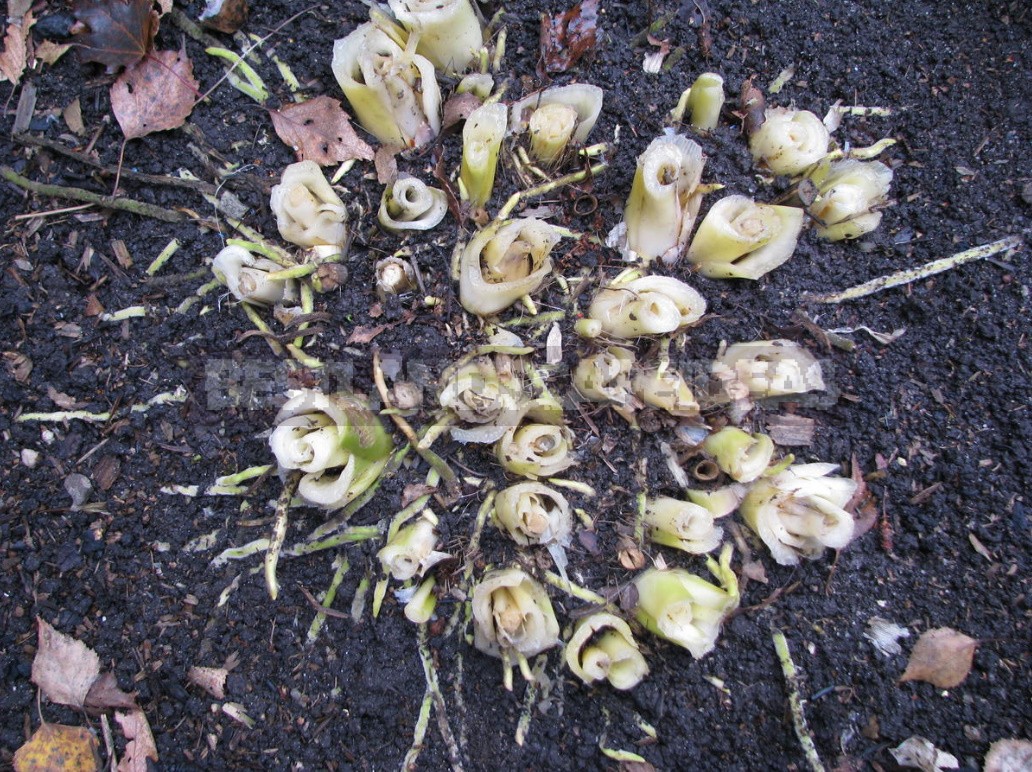
The best way to achieve this is to mulch the soil under the Bush with organic materials and fertilizers, such as well-decomposed manure, compost, deoxygenated peat. The purpose of such mulching is not only organic feeding. First, this technique helps to keep the roots in cooler soil layers, second, reduces the evaporation of moisture through the soil surface, and third, improves the structure of the soil.
Fertilizing-mulching can be carried out twice a season: in spring or early summer, during the active growth of young leaves, and late in the fall, before wintering, after cutting the leaves. After performing this effective agrotechnical technique, the plants are abundantly watered.
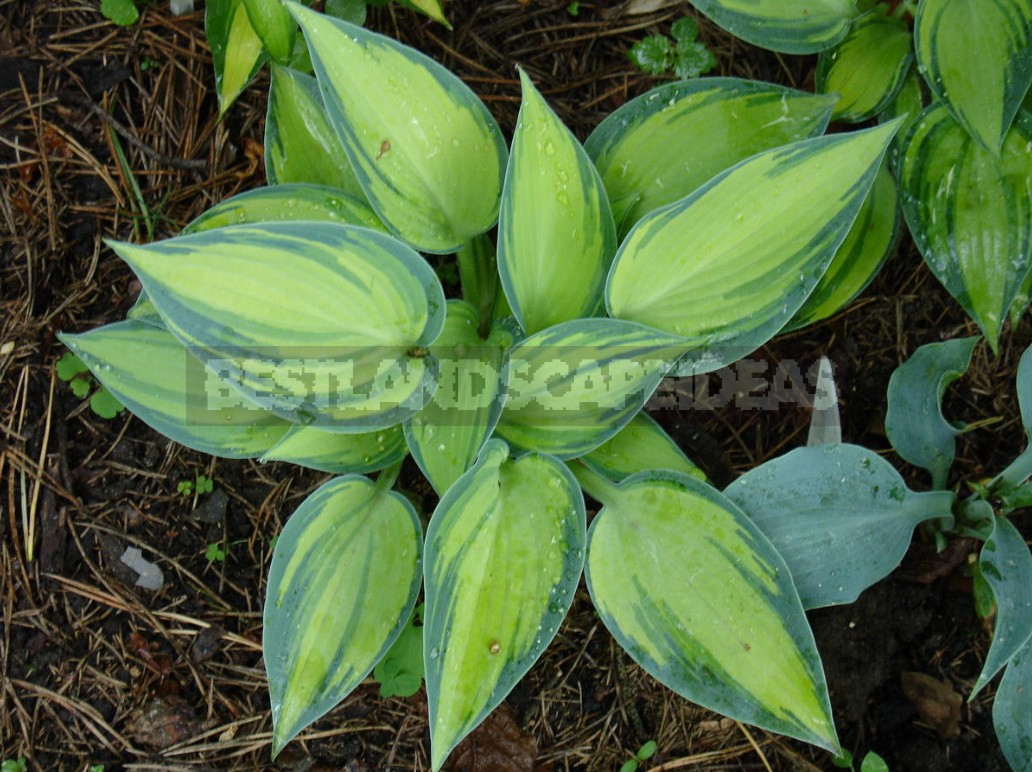
Mulch the soil under Hosta can also be mown lawn grass, coconut fibers, chips, bark, crushed corn cobs, pine nut shells, coniferous litter, hay, straw and other similar organic materials. The main purpose of such mulching is to reduce water evaporation through the soil surface.
Hostas mineral fertilizing can be carried out in two ways – root and foliar. In the root method, the granules of complex fertilizer are embedded in the loosened soil under the Bush or they are dissolved in water and this solution is watered by the plant under the root. It is convenient to combine mineral fertilizing with organic: granules are scattered on the soil surface under the Bush and mulch organic on top, then Hosta is abundantly watered with water under the root.
In the foliar method, special complex fertilizers are used, which are well soluble in water. The resulting solution with the help of a garden sprinkler is processed by plants on the foliage, and not only from above, but also from below. Blue and blue Hosta should be treated only on the underside of the leaves, since mineral fertilizers can dissolve the delicate wax coating.
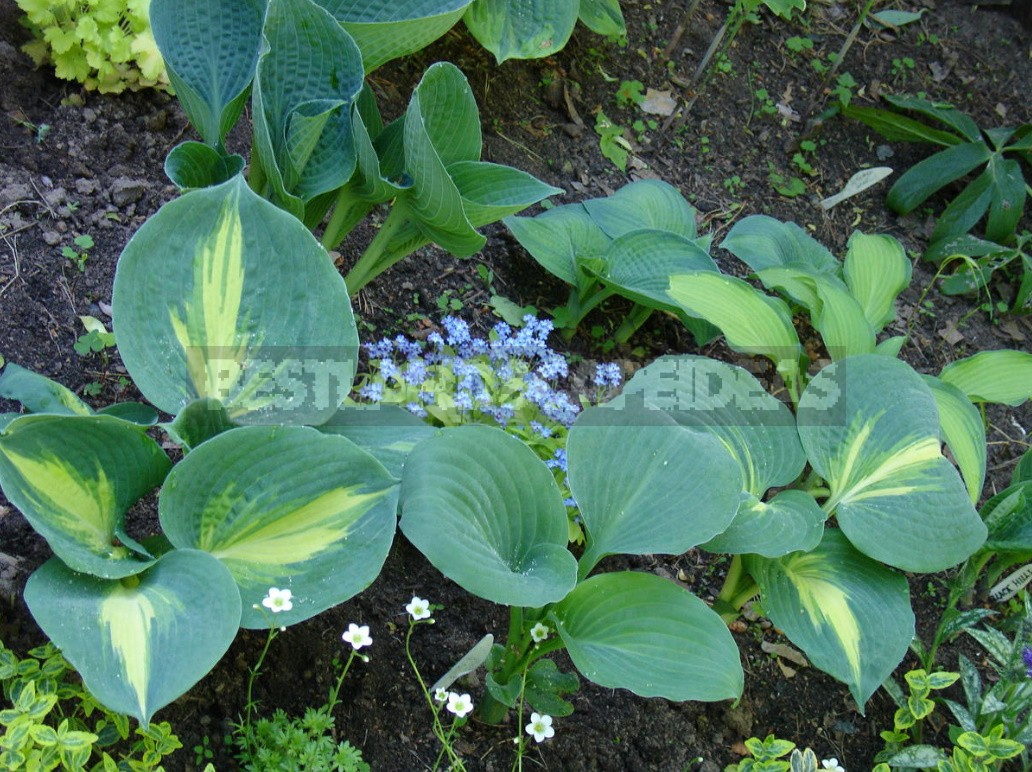
Fertilizing with mineral fertilizers is carried out 2-4 times per season, depending on the age and growth rate of Hosta. I would like to add that today special liquid water-soluble fertilizers for ornamental and deciduous plants are available, which contain a balanced set of macro-and microelements that effectively improve the expressive texture and contrast of variegated leaves.
Any fertilizing should be carried out after rain or heavy watering. As a rule, only adults and actively developing Hosta are fed. Weakened by the disease and young plants planted in prepared wells in earthen mixtures with mineral and organic fertilizers are not fed during the first 1-3 seasons. As soon as the supply of nutrients in the planting pit begins to Deplete, you should apply regular top-dressing.
Preparation for winter
One of the most frequently asked questions about Hosta care is whether to trim their foliage in the fall? Indeed, for Hosta growing in the garden, this question is important. Experienced growers must cut the ground part of Hosta before wintering plants.

One of the main goals of autumn leaf pruning is to remove slugs, snails and caterpillars from the bases of winter scoops. It is advisable not to delay this moment for a long time and not to bring the Hosta foliage to a bad state, since when a stable cold period occurs, dangerous garden pests will dig deep into the soil, and it will be almost impossible to destroy them. After pruning, it is desirable to loosen the soil under the Bush — the laid slug eggs, disturbed and found themselves on the surface, will quickly die.
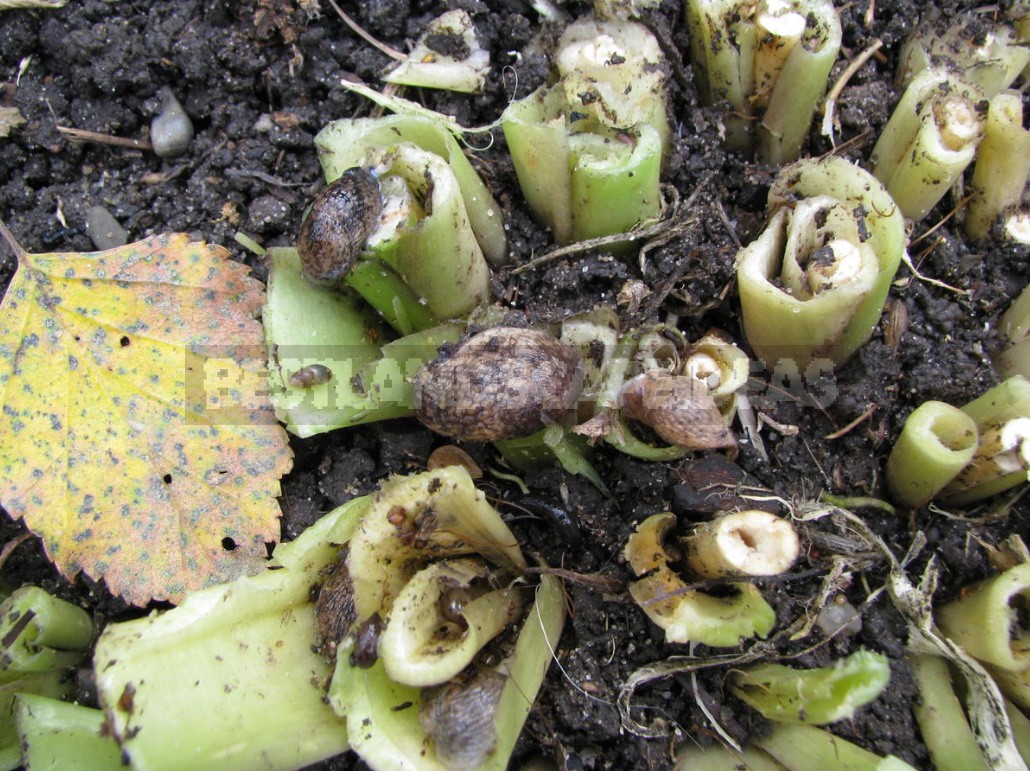
For preventive purposes, you can also at this moment scatter on the soil surface preparations that will help to cope with the remaining pests.
The foliage is cut off at the moment when it turns yellow or becomes a burnt shade and begins to lie on the ground, often this happens after the very first autumn frosts. During this pre-winter period, the entire appearance of the plant indicates that the process of photosynthesis is fading, and Hosta has laid underground the buds for the renewal of the next season.

The ground part is cut short, almost level with the ground, so that it is easier to remove slugs, but this should be done very carefully, since you can damage the dormant buds, which most varieties lay quite high – almost at the surface of the soil.
I will add: Hosta do not need shelter for the winter from their own foliage, as some novice growers believe. In natural conditions, last year’s Hosta foliage, rotting, then serves as a kind of organic mulch fertilizer. In the garden, we can not afford such “ugliness”, because the decorative nature of flower beds will suffer greatly, and garden pests will be free to winter under last year’s foliage.
Now you know how to achieve maximum decorative Hosta, using the correct techniques of planting and care. In the next material, we will talk about how to propagate your favorite varieties correctly.
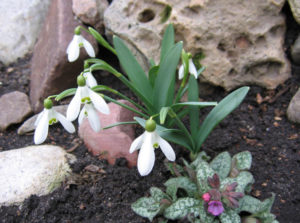
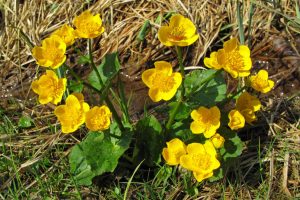
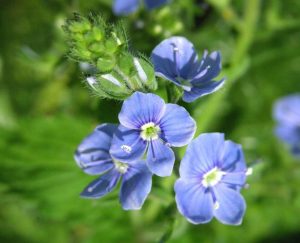

what is this in inches 30-50 cm. and the liters what is it in quarts and cups
The overhead watering is interesting. Perhaps why some made it and others didnt. However i once fertilized with grain rabbit pellets…. and the deer came attracted by the pellets ate them and my plants.
i see that about not fertilizing the newly planted plant, so are you assuming the soil you plant it with is wonderful already?